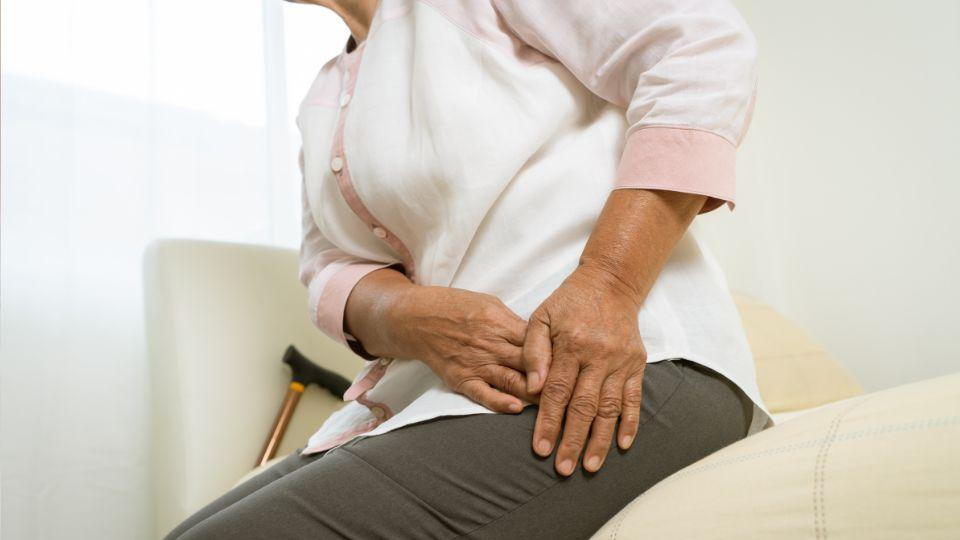
As we go about our daily lives, it's not uncommon to experience aches and pains in our bodies. Sometimes, these pains may seem similar, making it difficult to pinpoint the exact cause. This is especially true when it comes to hip pain and low back pain.
Hip pain and low back pain are two common conditions that can be easily confused with one another due to their close proximity to the body. However, each condition requires a different approach to treatment, making it important to understand the differences between the two. In this blog, we will discuss how to differentiate between hip pain and low back pain and the importance of seeking proper treatment with a back decompression machine so you can live a pain-free life. Let's get started!
Understanding Hip Pain
The hip joint is a ball-and-socket joint that connects the thigh bone (femur) to the pelvis. It allows for a wide range of motion and is crucial for activities such as walking, running, and sitting. When there is an issue with any structures in or around the hip joint, it can result in hip pain.
Hip pain can be caused by various factors such as osteoarthritis, bursitis, tendinitis, muscle strain or injury, and even referred pain from lower back issues. Common symptoms of hip pain include discomfort in the groin area or on the outside of the hip, difficulty with movement or weight-bearing activities, and stiffness.
Understanding Low Back Pain
The lower back, also known as the lumbar spine, is made up of five vertebrae that support the weight of the upper body and provide stability for movement. It is a complex structure with many muscles, ligaments, and nerves surrounding it. When any of these structures are injured or affected by conditions such as herniated discs, spinal stenosis, or sciatica, low back pain can occur.
Low back pain is one of the most common reasons people seek medical attention. It can range from mild discomfort to severe pain that affects daily activities. Symptoms may include stiffness, muscle spasms, shooting pains down the legs, and difficulty standing up straight. Low back pain can also be accompanied by numbness or tingling in the legs and feet. Therefore, understanding inflammatory vs. mechanical back pain can be helpful since the condition's treatment varies and requires precise diagnosis. A combination of a thorough medical history, physical examination, and diagnostic imaging is often necessary to determine the cause.
Read more: When Should I Be Worried About Lower Back Pain?
Hip Pain vs. Low Back Pain: How to Differentiate
While hip pain and low back pain may have similar symptoms, there are some key differences that can help differentiate between the two. Here are a few things to consider when trying to identify the source of your pain:
Location
Hip pain typically occurs in the groin area or on the outside of the hip, while lower back pain is usually felt in the lower back region. However, sometimes low back pain can radiate down into the hips and legs due to nerve compression. If you're experiencing pain in both areas, it's essential to consult with a doctor for an accurate diagnosis.
Range of Motion
Hip pain is often accompanied by stiffness and difficulty moving the affected leg. Sitting or standing for prolonged periods can also be uncomfortable. On the other hand, lower back pain may worsen with certain movements, such as bending forward or twisting, but it does not necessarily affect everyday activities like sitting or standing.
Associated Symptoms
While hip pain may cause discomfort in the hip area only, low back pain can be associated with other symptoms such as leg weakness, numbness or tingling in the legs and feet, and even changes in bowel or bladder function if there is nerve involvement. These additional symptoms are not typically present with hip pain.
Seeking Treatment: How Spinal Decompression Therapy Can Help
If you are experiencing either hip pain or low back pain, it's essential to speak to your doctor about potential treatment options. One highly effective treatment for both conditions is spinal decompression therapy using Antalgic-Trak. This non-invasive therapy uses a spinal decompression machine to gently stretch the spine and relieve pressure on compressed nerves, allowing for natural healing to occur.
Antalgic-Trak is a state-of-the-art spinal decompression machine that offers customizable treatment options for various spinal conditions. It is manufactured in the USA and has been clinically proven to provide relief from back pain, leg pain, sciatica, and other related symptoms. The machine's unique features, such as intermittent traction and sequential spinal elongation©, make it effective for treating both hip pain and lower back pain.
Don't let confusion between hip pain and low back pain keep you from seeking proper treatment. Speak to your doctor today about Antalgic-Trak and see how this revolutionary therapy can help you get back to living a pain-free life. Contact Antalgic-Trak today.
